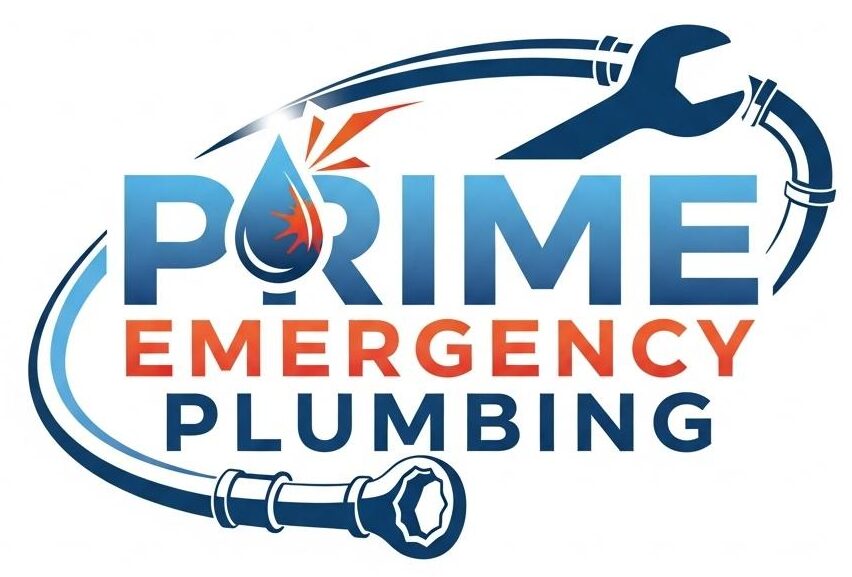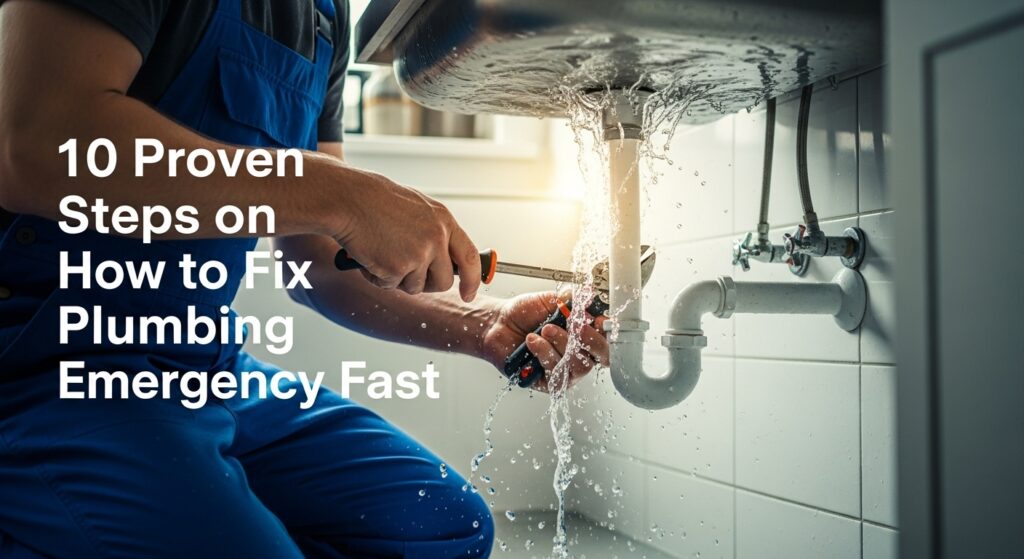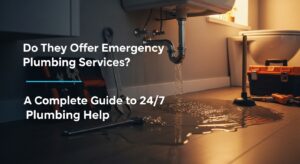Understanding What Qualifies as a Plumbing Emergency
A plumbing emergency isn’t just a minor leak—it’s a sudden, severe issue that can cause water damage, flooding, or health risks. Knowing what counts as an emergency helps you act faster and avoid costly repairs. Common examples include burst pipes, overflowing toilets, water heater breakdowns, and major clogs that lead to backflow.
Common Types of Plumbing Emergencies
Burst Pipes and Flooding Issues
A burst pipe can release gallons of water in minutes, soaking floors, walls, and furniture. This often happens during cold weather or due to worn-out pipes. The first step? Shut off your main water valve immediately, then drain remaining water from your faucets to relieve pressure.
Blocked Drains and Sewage Backups
A blocked drain can quickly escalate into a nightmare. If sewage starts backing up into sinks or tubs, it’s both a health hazard and a major inconvenience. Use a plunger or drain snake to remove blockages—but avoid using harsh chemicals, which can damage pipes.
Water Heater Failures and Gas Leaks
If your water heater leaks or emits a burning smell, turn it off and call a professional. Similarly, gas leaks require immediate evacuation and professional intervention. Never try to fix a gas issue on your own.
Safety First: What to Do Before Fixing a Plumbing Emergency
Safety comes before repair. Water and electricity can be a deadly combination, so it’s vital to secure your home before doing any plumbing work.
Locate and Turn Off the Main Water Supply
Find your home’s main shut-off valve—usually near the water meter or basement wall—and turn it clockwise to close it. This simple action prevents further flooding.
Disconnect Electrical Sources Around Water Areas
If the emergency involves water near electrical outlets or appliances, shut off the circuit breaker. This step reduces the risk of electric shock.
Assess the Situation Before Taking Action
Inspect the area for visible leaks, damage, and water spread. Understanding the scope of the problem helps you decide whether you can fix it yourself or need professional help.
Step-by-Step Guide on How to Fix a Plumbing Emergency
When dealing with a plumbing disaster, time is crucial. Follow these 10 proven steps to minimize damage and restore functionality.
1. Stop the Water Flow Immediately
Shut off your main water supply or use the isolation valve if the issue is localized.
2. Drain Remaining Water from Pipes
Turn on all faucets to let trapped water escape, preventing further leakage.
3. Patch or Seal Leaks Temporarily
Apply plumber’s tape, epoxy putty, or a rubber patch to small leaks as a temporary solution.
4. Unclog Drains Using a Plunger or Snake
Use gentle pressure to remove clogs. Avoid pouring chemical cleaners, which can corrode pipes.
5. Tighten Loose Connections and Joints
Check pipe fittings and tighten them using a wrench, but avoid overtightening.
6. Check Water Pressure and Valves
Ensure valves are operating smoothly and water pressure is consistent.
7. Use Pipe Repair Clamps for Burst Pipes
Pipe clamps provide a quick fix until a plumber replaces the damaged section.
8. Flush and Clean the Area
Remove debris, mop up water, and disinfect to prevent mold growth.
9. Test the Repair Before Restoring Water Supply
Turn on the water slowly and observe for leaks.
10. Call a Licensed Plumber if the Problem Persists
Some issues require expertise—especially with gas, main lines, or hidden leaks.
Essential Tools and Supplies for Emergency Plumbing Repairs
| Tool/Supply | Use |
|---|---|
| Adjustable Wrench | Tighten or loosen pipe joints |
| Plumber’s Tape | Seal small leaks and joints |
| Pipe Clamp | Quick fix for burst pipes |
| Drain Snake | Remove clogs from drains |
| Bucket and Towels | Contain water leaks |
| Flashlight | Improve visibility in dark areas |
Preventing Future Plumbing Emergencies
Prevention is the best cure for plumbing disasters.
Regularly Inspect Pipes and Fixtures
Look for corrosion, leaks, or signs of wear every few months.
Avoid Flushing or Draining Problematic Materials
Never flush wipes, grease, or food scraps down drains.
Schedule Annual Professional Inspections
A yearly plumbing inspection helps detect problems early and keeps your system efficient.
When to Call Emergency Plumbing Services
If your DIY efforts don’t solve the issue—or if there’s risk to safety—it’s time to call a 24/7 plumber. Professional plumbers can handle complex repairs and prevent long-term damage.
You can check trusted local services like HomeAdvisor’s Emergency Plumbing Directory to find qualified experts near you.
FAQs About How to Fix Plumbing Emergency
1. What should I do first in a plumbing emergency?
Immediately shut off the main water supply to prevent further flooding.
2. Can I fix a burst pipe myself?
You can temporarily patch it using a clamp or tape, but call a plumber for permanent repairs.
3. How can I tell if I need professional help?
If there’s sewage backup, gas smell, or major flooding, always call a professional.
4. What tools should I keep for emergencies?
A wrench, plumber’s tape, bucket, flashlight, and plunger are must-haves.
5. How can I prevent future plumbing emergencies?
Regular inspections, proper disposal habits, and winterizing pipes are key.
6. Are chemical drain cleaners safe?
Avoid them—they can corrode pipes. Use natural alternatives or mechanical tools instead.
Conclusion: Acting Fast Saves Time, Money, and Your Home
Learning how to fix plumbing emergency situations empowers you to protect your property and save costly repairs. Acting swiftly, prioritizing safety, and knowing when to call professionals ensures your home stays dry, safe, and stress-free. Remember—prevention and preparedness are your best defenses against plumbing chaos.




